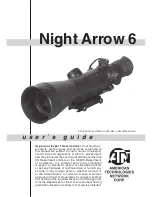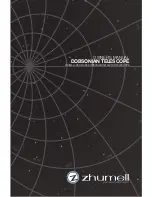
TNG-MAN-HAN-0003
13
3.
Click on the star and then click on the Repoint button in the Acquisition Image
window.
(The sequencer sends an offset to the telescope, puts the star in the fiber position,
acquires another image from the auto-guider camera and shows the image in the
Acquisition Image window)
4.
When the image appears, if the star is in the fiber position (red circle), click in the Go
button in the Acquisition Image window.
After that the sequencer starts the auto-guide and the spectroscopic acquisition.
When the OB ends, a bell sound confirms the correct execution of the command and the Next
Acquisition button turns in active mode.
Very important:
During the exposure, especially in long time exposures, verify that the guiding is
working in a correct way. The “integrated Image” window of the autoguider (right side
of the Error! Reference source not found.) has to show the star centred in the fiber p
osition and with a shape like a ‘donut’.
Verify that the exposure meter is active, the shutter open and the signal as expected
3.5
The Observing Control Software (OBS)
The OCS is the interface to the Telescope Control System (TCS). The interface enables the instrument to
send commands to the telescope via the TNG library. Currently HARPS-N is able to send three
commands; Pointing, AG offsets and M2 offsets to calculate and correct the focus via an automatic
procedure. The connections between both systems are completely asynchronous but when the
command finishes successfully the TCS returns an Ok status. When an error condition has arisen, the
TCS also returns a message back to the sequencer flagging that condition.
In the Observing manager webpage is possible to monitoring the actions and the results. The operator
can also interrupt the action when the condition needs it.
3.5.1
The pointing/tracking sends the telescope to the limit switch
When one of these conditions will occurs:
a pointing-command moves the telescope to the limit switch position
the telescope operator believe that the telescope can reach the limit switch during the
observation
The telescope operator has to stop the command by clicking the “X” button in the ‘option’ section in the
“tng observing manager” webpage.
To avoid errors the astronomer has to wait doing nothing, until the sequencer ends the OB with an abort.
At this point the telescope operator can move the telescope to an appropriate position and the
astronomer can repeat the aborted OB.
When the tracking moves the telescope close to the limit switch, and the telescope operator must to stop
the telescope during the science exposure. The procedure to stop the processes is the following:
1)
from the sequencer terminate the exposure of the current OB (click on terminate exposure
button)
2)
from the tracking system stop the telescope






























